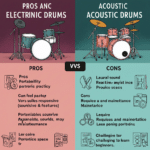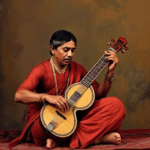Unleash Your Inner Maestro: A Comprehensive Guide to Flamenco Guitar
Imagine a dimly lit room. A dancer moves with fire. Clapping hands and voices rise in song. The heart of it all? A lone guitarist, weaving magic. That is flamenco. Its guitar, a beast all its own. This article will guide you. From zero to flamenco hero.
Understanding the Soul of Flamenco: History and Cultural Context
More than notes, flamenco pulses with history. To truly play, you gotta know its story.
A Brief History of Flamenco
Born in Andalusia, Spain. A melting pot of Roma, Moorish, and Jewish sounds. Oppressed people poured their pain into song and dance. Flamenco became their voice. It grew from small gatherings into a powerful art. The guitar became a vital part.
The Palo System: Decoding Flamenco Forms
Flamenco’s built on “palos.” These are forms, each a different mood. Soleá is heavy, a sad lament. Alegrías bursts with joy, a dance of spring. Bulerías are wild, fast, full of improvisation. Knowing these unlocks the music’s soul.
The Role of the Guitar in Flamenco
The guitar started as just support. Over time, it stepped into the spotlight. Players shaped it. They crafted new techniques for rhythm and feeling. It now drives the singer, the dancer. It leads the flamenco fire.
Essential Techniques for Flamenco Guitar Mastery
Flamenco guitar has special tricks. Learn these, and your fingers will fly!
Rasgueado: The Art of Flamenco Strumming
Rasgueado is the flamenco strum. Not like your campfire chords! Use fingers like a fan. Three-finger, four-finger, thumb rolls. Practice slowly to build speed. Aim for power and clarity.
Exercises:
- Start with a simple downstroke with your index finger.
- Add the middle finger, then the ring finger.
- Reverse the order for an upstroke.
- Increase speed gradually while keeping the rhythm even.
Picado: Precision Fingerstyle Playing
Picado is fast. Index and middle fingers take turns. Like a hummingbird’s wings. It makes quick melodies. Keep your hand relaxed for speed. Practice scales and simple lines.
Tips:
- Anchor your pinky finger for stability.
- Use a metronome to maintain evenness.
- Start slow, gradually increasing the tempo.
Alzapúa: The Powerful Thumb Stroke
Alzapúa is a flamenco power move. Thumb goes up, then down. Strikes the strings hard. Creates strong chords. Mix it with rasgueado. It brings fire to your playing.
Coordination Exercises:
- Practice alternating thumb upstrokes and downstrokes on open strings.
- Incorporate simple chords.
- Focus on maintaining a steady rhythm and strong attack.
Tremolo: Sustaining Melodies with Speed
Tremolo creates a flowing sound. Thumb, index, then middle and ring fingers. A quick repeating pattern. It sustains melodies. Giving a vocal sound.
Application in Melodic Passages:
- Practice the P-I-A-M sequence slowly and deliberately.
- Apply it to simple melodies, focusing on smooth transitions between notes.
- Gradually increase the speed while maintaining clarity and evenness.
Gear and Setup: Choosing the Right Flamenco Guitar
Your guitar matters. A flamenco guitar sings different.
Distinguishing Features of a Flamenco Guitar
Flamenco guitars are special. Cypress wood makes them bright. Thinner tops give a snappy sound. A golpeador protects the wood. They are built for the flamenco sound. Not like a classical guitar.
Strings and Action: Optimizing for Flamenco
Strings affect the sound. Nylon is warm, traditional. Carbon is bright, loud. Action (string height) matters too. Lower action for fast playing. Try different setups to find what you like.
The Golpeador: Protecting Your Guitar
Flamenco is rough on guitars. Lots of tapping and banging. The golpeador is a plastic tap plate. It protects the wood from your fingernails. Easy to stick on. Replace it when it wears down.
Diving Deeper: Advanced Concepts and Techniques
Ready for the next level? These ideas will push you.
Falsetas: Crafting Melodic Variations
Falsetas are like guitar solos. Little melodies within the song. You make them up! Learn some basic patterns. Then twist them, make them your own. Every falseta is a statement.
Common Falseta Patterns:
- Learn basic chord progressions and arpeggios in different palos.
- Experiment with adding melodic embellishments and rhythmic variations.
- Transcribe falsetas from recordings of famous flamenco guitarists.
Ligados: Hammer-ons and Pull-offs in Flamenco
Ligados are smooth moves. Hammer-ons and pull-offs. Fingers create notes without picking. Sounds slippery and fast. Use them to add flair. To connect notes smoothly.
Mastering Compás: Rhythmic Precision in Flamenco
Compás is the heart of flamenco rhythm. A repeating cycle. Each palo has its own compás. Counting is key. But feeling it is more important. Bulerías is a 12-beat cycle. Soleá is a slower 12. Alegrías is a quick 12 also. Master compás, master flamenco.
Exercises for Developing Rhythmic Accuracy:
- Practice clapping the compás of different palos.
- Tap your foot to the beat while playing simple chords.
- Play along with recordings of flamenco music, focusing on locking in with the rhythm.
Learning Resources and Further Exploration
Want to learn more? Here are some ideas.
Recommended Flamenco Guitar Teachers and Schools
Find a good teacher. They can show you the secrets. Look for flamenco schools. Especially in Spain. A teacher can speed up your learning.
Online Courses and Tutorials
YouTube’s full of lessons. Many sites offer courses. Some are free, some cost money. Find teachers that you understand. Online lessons can help you learn.
Essential Flamenco Recordings
Listen to the masters. Paco de Lucía, a legend. Sabicas, a pioneer. Tomatito, modern master. Hear how they use the guitar. Learn from their fire.
Conclusion
Flamenco guitar takes time. Its not easy. But it’s rewarding. Learn the techniques, feel the music. Find your own voice. The world needs your flamenco. Start your journey now.
For more tips on percussion instruments and to explore our premium cajon collection, visit Gappu.tv and join the rhythm revolution!


